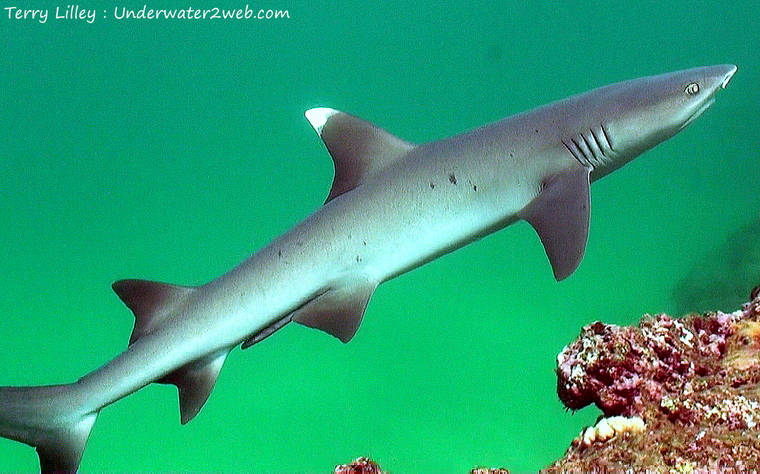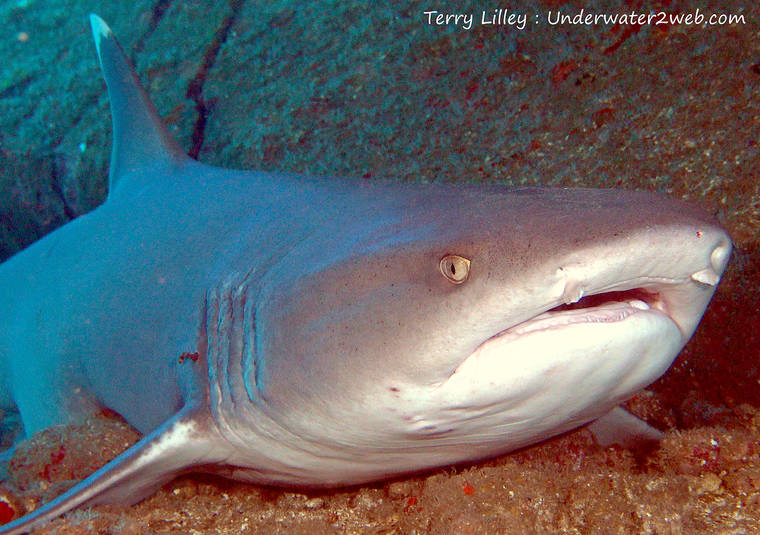This very special six-to-eight foot long shark is very important to Hawaiian coral reefs and also to the Hawaiian culture! For over 1,000 years the people here in Hawaii protected these sharks as they are part of their spiritual connection to the sea.
Mano lala kea is a harmless shark to humans and they tend to live their lives on the same section of the reef so they do not migrate like many other shark species do. While diving in Hawaii we tend to see the same Whitetips in the same area of the reef as they like to sleep in the underwater caves during the day and hunt at night.
Most sharks have to constantly move through the water in order to breath but the Whitetip can remain still on the sea floor and pump seawater through its gills with its mouth in order to breath.
Sometimes we see four or five of these sharks resting on the sand in asingle cave, and one time at Tunnels Reef (Makua) in Kauai I shot video of 10 mano lala kea all together in one cave the size of a normal bedroom!
This is the most common shark in Hawaii and they are the ocean garbage collectors! A Whitetip cannot move fast enough to catch a healthy fish so they just eat the fish when they become sick, disease or wounded.
If we did not have a good population of these sharks our Hawaiian white sandy beaches would be covered in dead stinky fish!
Whitetips also like to feed on lobsters that are active at night and they will occasional feed on a dead animals that washes out to sea during a storm.
Whitetips are the most common shark swimmers see, but they do not bother people in any way. They are supper friendly and will let divers come right up to them and hang out in the caves where they sleep during the day.
Many scuba divers come from all around the world just to visit mano lala kea here in Hawaii due to their gentile nature and lack of fear of people.
The Whitetips usually mate once a year and the males are a little thinner then the females and have a different fin structure on their underside used in breeding. The females keep their fertilized eggs inside of their bodies and then give live birth to four to eight pups.
Once the babies are born the female leaves them to fend for themselves but sometimes the babies will hang out together for a few months and then venture off out onto the reef to find a spot of their own to call home.
You can see mano lala kea in action on my underwater educational web page at www.underwater2web.com in my video The Worlds Guide to Hawaiian reef Fish and also follow my daily marine life Instagram post at terry.lilley.
Aloha from under the waves,
•••
Terry Lilley, Marine Biologist, Hanalei, underwater2web.com, www.gofundme.com/5urrm4zw
All Photographs © 2016 Terry Lilly



